Java中的流(IO流.
java.io包中定义了多个流类型(类或抽象类)来实现 输入 / 输出功能,可以从不同的角度对其进行分类:
按单位可分为: 字节流 (一个字节一个字节的读取) 字符流 (一个字符一个字符的读取『一个字符是两个字节』)
按功能不同可以分为: 节点流 (数据的传输) 处理流 (数据的处理)
按方向可以分为: 输入流 (相对于程序来说的) 输出流 (相对于程序来说的)
以下 输出输出流 图中深色的为节点流,浅色为处理流。 InputStream 继承自该类的流都是用于向程序中输入数据,且数据的单位为字节(8bit);
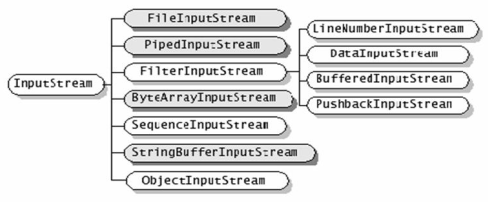
基本方法:
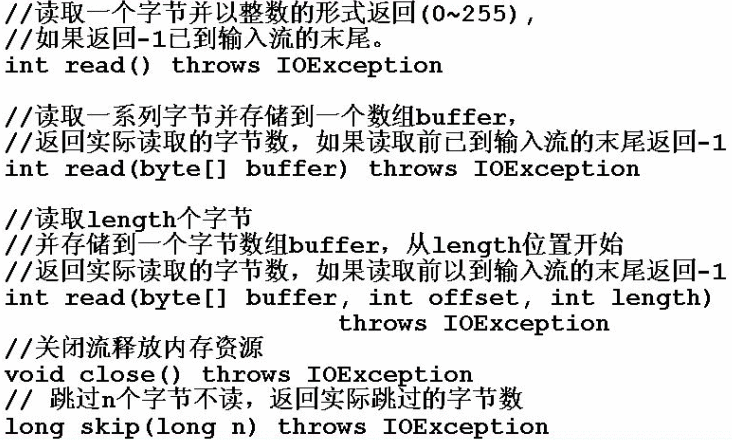
OutputStream 继承自该类的流是用于程序中输入数据,且数据的单位为字节(8bit);
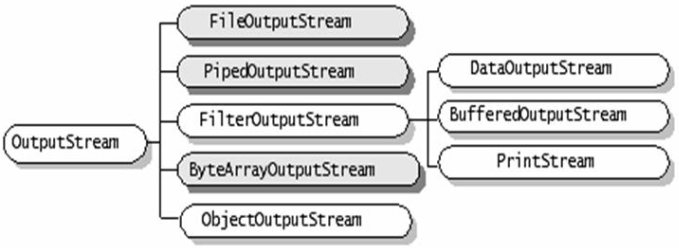
基本方法:
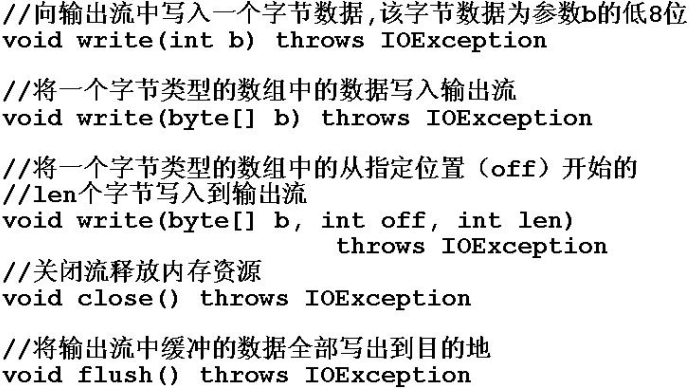
Reader 继承自该类的流都是用于向程序中输入数据,且数据的单位为字符(16bit);
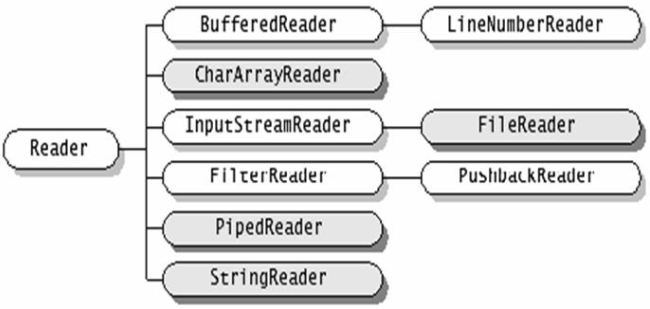
常用方法:
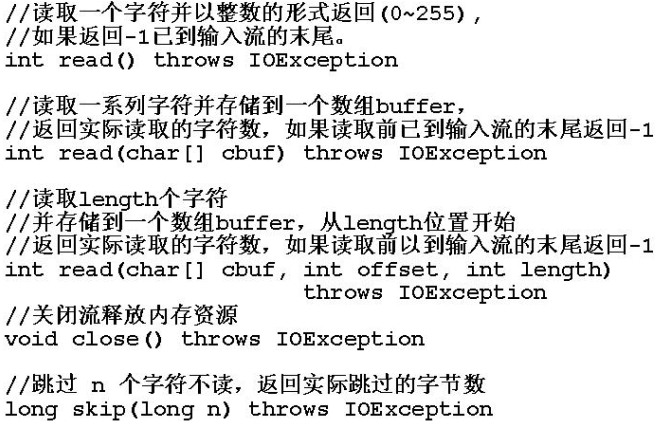
Writer 继承自该类的流都是用于程序中输入数据,且数据的单位为字符(16bit);
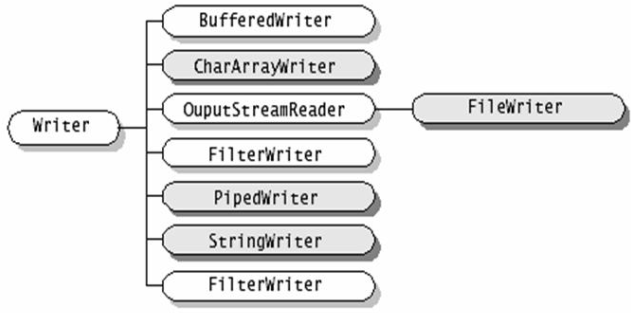
常用方法:
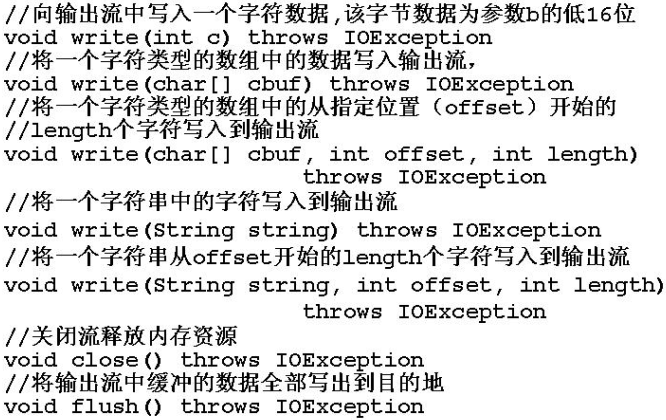
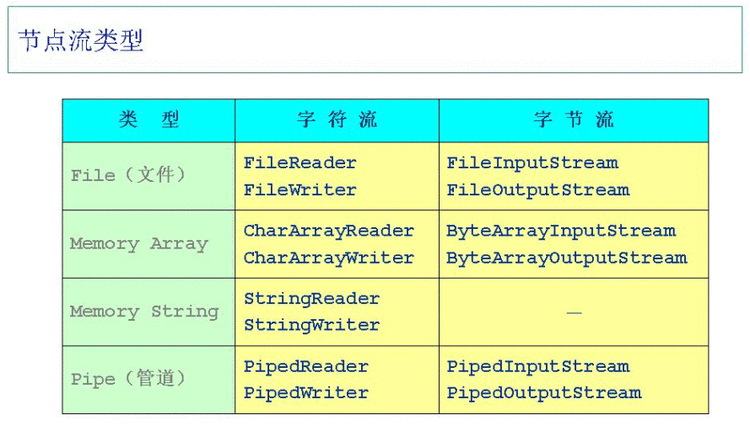
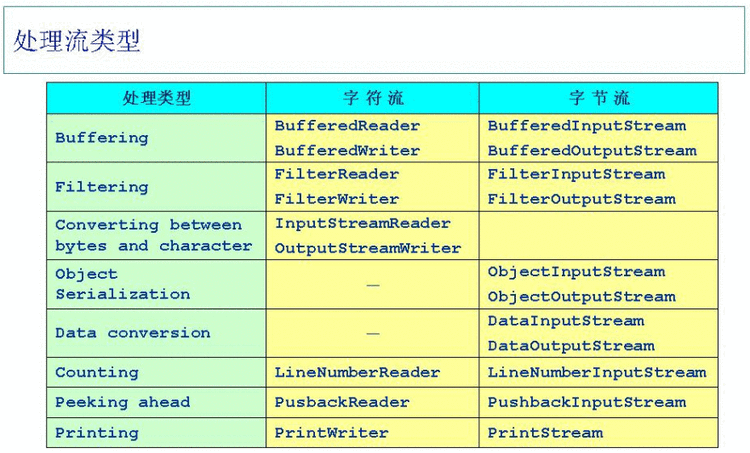
缓冲流: 缓冲流要“套接”在相应的节点流之上,对读写的数据提供了缓冲的功能,提高了读写的效率,可以降低硬盘的读写次数,同时增加了一些新的方法。 SDK提供了四种缓存流,其常用的构造方法为:

转换流(转换编码):

Print流 用于输出
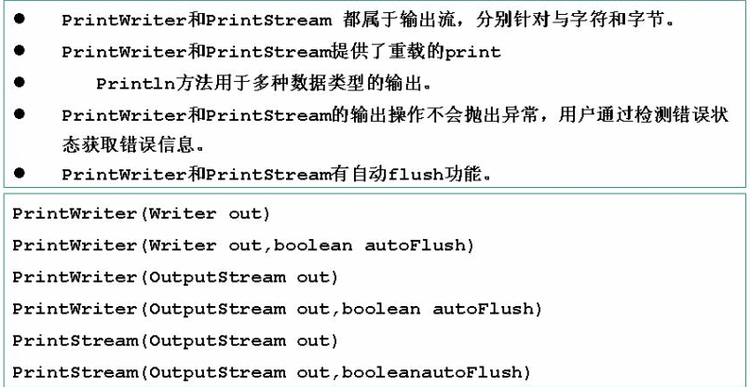
在使用中如下: new InputStreamReader(System.in);//监听读取键盘的输入 PrintWriter log = new PrintWriter(输入流); 另外实例: PrintStream ps = null; try { FileOutputStream fos = new FileOutputStream(“d:\\bak\\log.dat”); ps = new PrintStream(fos); } catch (IOException e) { e.printStackTrace(); } if(ps != null){ System.setOut(ps); }
Object流 该类的Object流是保存对象用的。 注意代码: FileOutputStream fos = new FileOutputStream(file); BufferedOutputStream bos = new BufferedOutputStream(fos); 才可进行写的操作。 要保存对象,必须要求该对象的实体类是可序列化的『Serializable』。 transient关键字 在序列化的实体类中,使用transient关键字修饰的属性,被修饰的属性被视作透明不存在的。 实现Externalizable接口是自己写序列化,保存对象的输出流方法。
具体如下图所示:

示例代码: public void InputStreamTest() { /** * 创建文件夹以及文件 */ String sep = File.separator; String path = “E:” + sep + “MyTest”; String fileName = “document.txt”; File file = new File(path, fileName); if (file.exists()) { System.out.println(“文件路径:”+file.getAbsolutePath()); System.out.println(“文件大小:”+file.length()); } else { file.getParentFile().mkdirs(); try { file.createNewFile(); } catch (IOException e) { // TODO Auto-generated catch block e.printStackTrace(); } }
/** * 字节读取文件 */ try { FileInputStream fis = new FileInputStream(file); BufferedInputStream bis = new BufferedInputStream(fis); //这些Buffered**的都是处理流(缓冲) int b ; while ((b=bis.read())!=-1) { System.out.print((char)b); } bis.close(); System.out.println(“\n\n”); } catch (FileNotFoundException e) { // TODO Auto-generated catch block System.out.println(“未找到文件”); e.printStackTrace(); } catch (IOException e) { // TODO Auto-generated catch block e.printStackTrace(); }
/** * 字符读取文件 */ try { FileReader fileReader = new FileReader(file); BufferedReader br = new BufferedReader(fileReader); int b ; while ((b=br.read())!=-1) { //使用br.readLine();可读一行数据 System.out.print((char)b); } br.close(); } catch (FileNotFoundException e) { // TODO Auto-generated catch block e.printStackTrace(); } catch (IOException e) { // TODO Auto-generated catch block e.printStackTrace(); }
/** * 字节输入文件 */ try { FileOutputStream fos = new FileOutputStream(file); BufferedOutputStream bos = new BufferedOutputStream(fos); String str = new String(“所有的中文测试”); byte[] c=str.getBytes(); bos.write(c); bos.flush(); bos.close(); } catch (FileNotFoundException e) { // TODO Auto-generated catch block e.printStackTrace(); } catch (IOException e) { // TODO Auto-generated catch block e.printStackTrace(); } /** * 字符输入文件 */ try { FileWriter fw = new FileWriter(file,true);//写上true代表在原有的字符串后面继续写入 BufferedWriter bw = new BufferedWriter(fw); String str = “受了点伤”; bw.write(str.toCharArray()); bw.flush(); //将缓存中的数据完全打印 bw.close(); } catch (IOException e) { // TODO Auto-generated catch block System.out.println(“文件读写错误”); e.printStackTrace(); } /** * Data数据流测试,这个子类是将对象保存到了“*.txt”文件中,在文件中显示乱码 * 因为是将对象保存到了 txt 文件中,所以无法正常显示。 */ try { FileOutputStream fos = new FileOutputStream(file); BufferedOutputStream bos = new BufferedOutputStream(fos); DataOutputStream dos = new DataOutputStream(bos); double dou = Math.random(); System.out.println(dou); dos.writeDouble(dou); dos.flush(); dos.close(); } catch (FileNotFoundException e1) { // TODO Auto-generated catch block e1.printStackTrace(); } catch (IOException e) { // TODO Auto-generated catch block e.printStackTrace(); } /** * Data数据流在程序之间的传递 */ try { ByteArrayOutputStream baos = new ByteArrayOutputStream(); DataOutputStream dos = new DataOutputStream(baos); dos.writeDouble(Math.random()); dos.writeBoolean(true); ByteArrayInputStream bais = new ByteArrayInputStream(baos.toByteArray()); System.out.println(bais.available()); DataInputStream dis = new DataInputStream(bais); System.out.println(dis.readDouble()); System.out.println(dis.readBoolean()); dos.close(); dis.close(); } catch (FileNotFoundException e) { // TODO Auto-generated catch block e.printStackTrace(); } catch (IOException e) { // TODO Auto-generated catch block e.printStackTrace(); } /保存对象///stu对象必须实现了Serializable接口,也就是必须可序列化 public void forSaveObject(Student stu){ try { FileOutputStream fos = new FileOutputStream(“E:/dd.dox”); ObjectOutputStream oos = new ObjectOutputStream(fos); oos.writeObject(stu); oos.flush(); oos.close(); } catch (FileNotFoundException e) { // TODO Auto-generated catch block e.printStackTrace(); } catch (IOException e) { // TODO Auto-generated catch block e.printStackTrace(); } }
}

)

![[C语言] 选择排序之直接选择排序的特性及实现](http://pic.xiahunao.cn/[C语言] 选择排序之直接选择排序的特性及实现)





基本概念第四小节 操作符)









